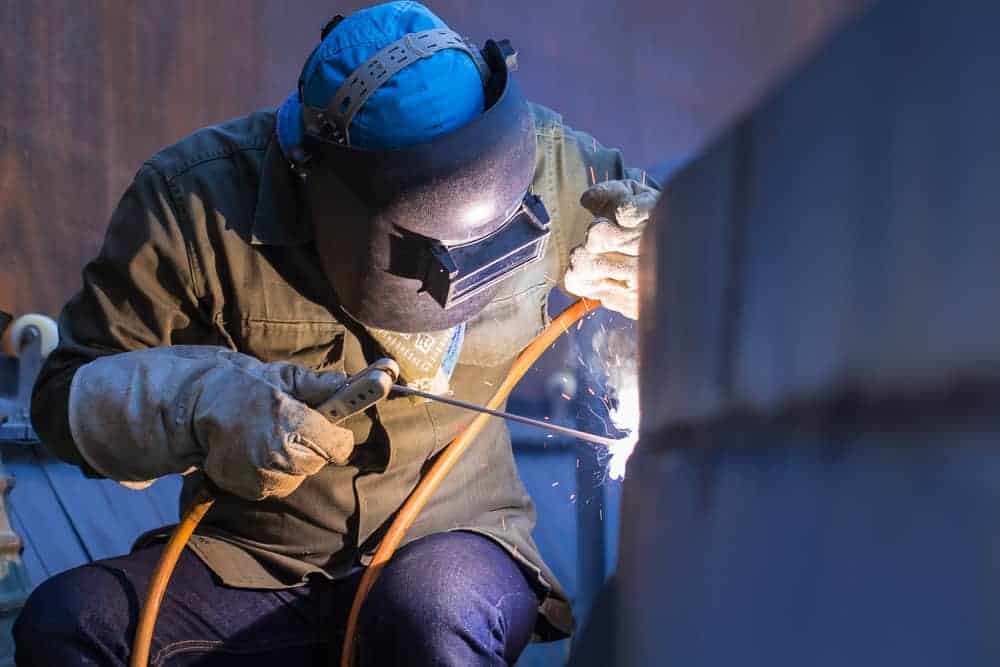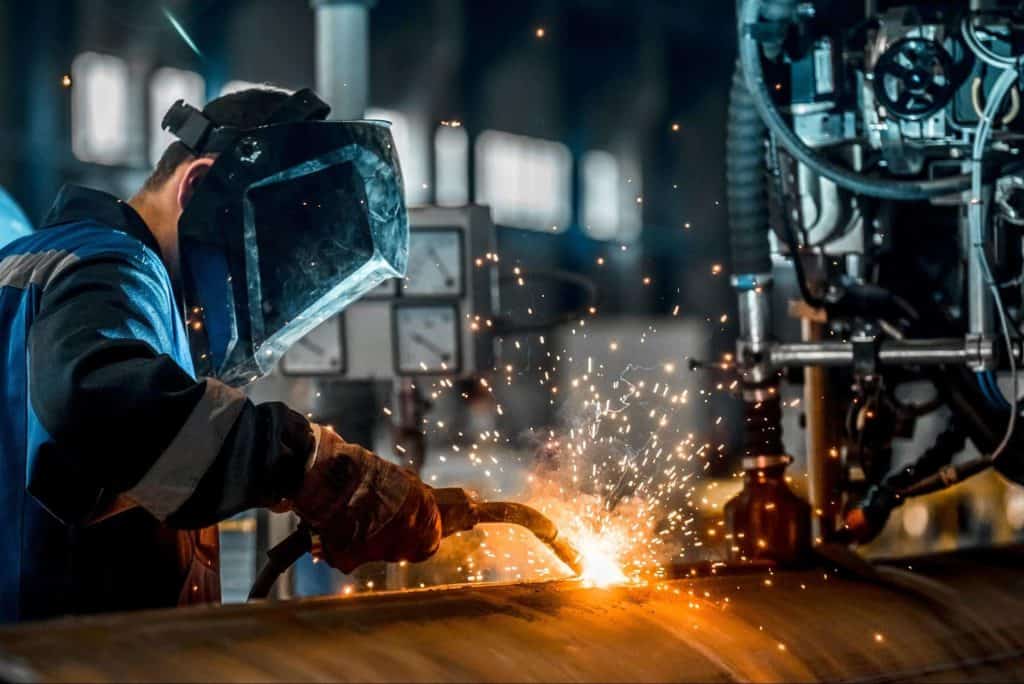Checking Out the Principles of Welding Inspection: A Detailed Evaluation of Procedures, Tools, and the Importance of Top Quality Control in Welding Industries
Welding assessment offers as a keystone in the maintenance of security and architectural integrity across numerous sectors. By analyzing the vital procedures and tools utilized in these examinations, one can value the detailed equilibrium in between top quality control and conformity with well established criteria from companies such as AWS and ANSI. The techniques utilized, including non-destructive and aesthetic screening methods, are pivotal in detecting flaws that could compromise the sturdiness of bonded structures. Recognizing the implications of these practices raises vital concerns about their effectiveness and the future instructions of quality control in welding.
Importance of Welding Evaluation
Welding inspection plays an important function in making certain the integrity and safety of bonded frameworks. It acts as a systematic approach to assessing weld quality, recognizing prospective problems, and ensuring compliance with well established standards and specifications. The value of welding assessment expands past plain adherence to regulations; it is critical in guarding human lives and shielding investments in infrastructure.
Defective welds can cause tragic failures, causing significant financial losses, injury, or death. Therefore, strenuous inspection processes are necessary to detect problems such as insufficient penetration, porosity, or splits prior to they intensify right into critical failings. In addition, effective welding assessment adds to the overall efficiency and durability of structures, ensuring that they can stand up to the conditions for which they were made.
In addition, the implementation of welding inspection fosters a culture of top quality and liability within the welding market. By focusing on evaluation, organizations demonstrate their commitment to excellence, consequently boosting their track record and competition in the market. Eventually, welding examination is not merely a procedural step but an essential component of design stability and security assurance, essential for the successful implementation of welding tasks throughout numerous industries.
Key Assessment Processes
An extensive strategy to welding assessment includes several vital procedures that are important for making sure weld top quality and architectural integrity. The first essential process is aesthetic evaluation, which allows inspectors to identify surface area defects such as fractures, porosity, and incorrect grain appearance. This method functions as a preliminary evaluation to make certain that the weld satisfies specified standards.

Furthermore, destructive testing might be carried out on sample welds to examine their mechanical residential properties and efficiency under tension. This process involves exhaustion, tensile, and effect screening to confirm that the weld can withstand functional problems.
Last but not least, documents and reporting are vital parts of the evaluation procedure. Preserving accurate documents of inspections, observations, and examination results helps ensure conformity with industry requirements and assists in regular renovation in welding practices. Jointly, these crucial procedures develop the backbone of efficient welding examination and quality control.
Devices for Weld Analysis
Many devices are necessary for efficient weld examination, each created to evaluate various elements of weld quality and performance. Among the most extensively made use of are visual evaluation tools, including magnifying glasses and borescopes, which allow assessors to recognize surface problems such as fractures, porosity, and inappropriate blend.
Furthermore, ultrasonic testing (UT) tools is vital for useful link finding interior imperfections. This device uses high-frequency audio waves to reveal stoppages within the weld, making sure the integrity of the material. Radiographic screening (RT) devices, which utilize X-rays or gamma rays, similarly provide understanding right into the interior framework of welds, permitting the identification of additions or gaps.
For specific dimensions, calipers and determines play a substantial function in determining weld dimensions and guaranteeing adherence to specified tolerances. Hardness testers examine the mechanical properties of the weld, guaranteeing it fulfills performance requirements.

Methods for Analyzing Quality
Just how can the quality of welds be accurately analyzed? A range of techniques are employed to review weld honesty and ensure adherence to specified requirements. Aesthetic examination is the most essential technique, enabling assessors to determine surface area problems such as fractures, porosity, or damaging. This non-destructive technique acts as an initial assessment before more sophisticated techniques are made use of.
Ultrasonic testing (UT) is another noticeable method that uses high-frequency sound waves to identify internal flaws within the weld. Houston Welding Inspection. This technique supplies a thorough view of the weld's honesty without jeopardizing its architectural stability. Furthermore, radiographic screening (RT) uses X-rays or gamma rays to expose interior flaws, using detailed insights into weld top quality
Magnetic particle screening (MT) is reliable for spotting surface area and near-surface discontinuities in ferromagnetic products, using electromagnetic fields and colored particles to click reference highlight problems. Color penetrant screening (PT) can be utilized to uncover surface-breaking defects by applying a dye that leaks right into cracks and is ultimately disclosed.
Compliance With Sector Requirements
Conformity with industry standards is important for ensuring the quality and safety of welded structures. These standards, established by companies such as the American Welding Society (AWS) and the American National Standards Institute (ANSI), provide standards that regulate the welding process, materials, and assessment procedures. Sticking to these standards not only makes certain the structural integrity of welds yet also reduces dangers linked with failures that could lead to disastrous effects.

Welding assessors are entrusted with confirming conformity with these requirements throughout the welding procedure (Houston Welding Inspection). This includes assessing welding treatments, keeping an eye on welder certifications, and performing complete inspections of the end product. Non-compliance can result in considerable financial consequences, project hold-ups, and damages to a firm's online reputation
Routine training and updates on requirements are vital to maintain personnel notified and competent, ensuring that all aspects of welding procedures meet or surpass governing needs. Ultimately, dedication to industry criteria offers as a structure for quality in the welding sector, advertising safety and reliability in bonded frameworks.

Final Thought
In conclusion, welding assessment works as a vital component in preserving the security and honesty of bonded structures. Via the implementation of vital assessment processes and the use of innovative devices and methods, prospective defects can be recognized and addressed properly. Adherence to industry standards makes certain conformity and advertises a society of high quality within the welding sector. Inevitably, rigorous evaluation techniques not just secure human lives however also enhance the resilience and performance of welded constructions.
In addition, the application of welding inspection cultivates a society of quality and responsibility within the welding industry. Eventually, welding inspection is not simply a procedural action however a fundamental part of design stability and safety assurance, crucial for the effective execution of welding projects throughout numerous markets.
A detailed approach to welding evaluation includes numerous crucial processes that are crucial for making sure weld top quality and structural stability. These criteria, established by organizations such as the American Welding Culture (AWS) and the American National Criteria Institute (ANSI), provide standards that govern the welding procedure, products, and examination procedures.Welding examiners are charged with validating compliance with these standards throughout discover this info here the welding process.